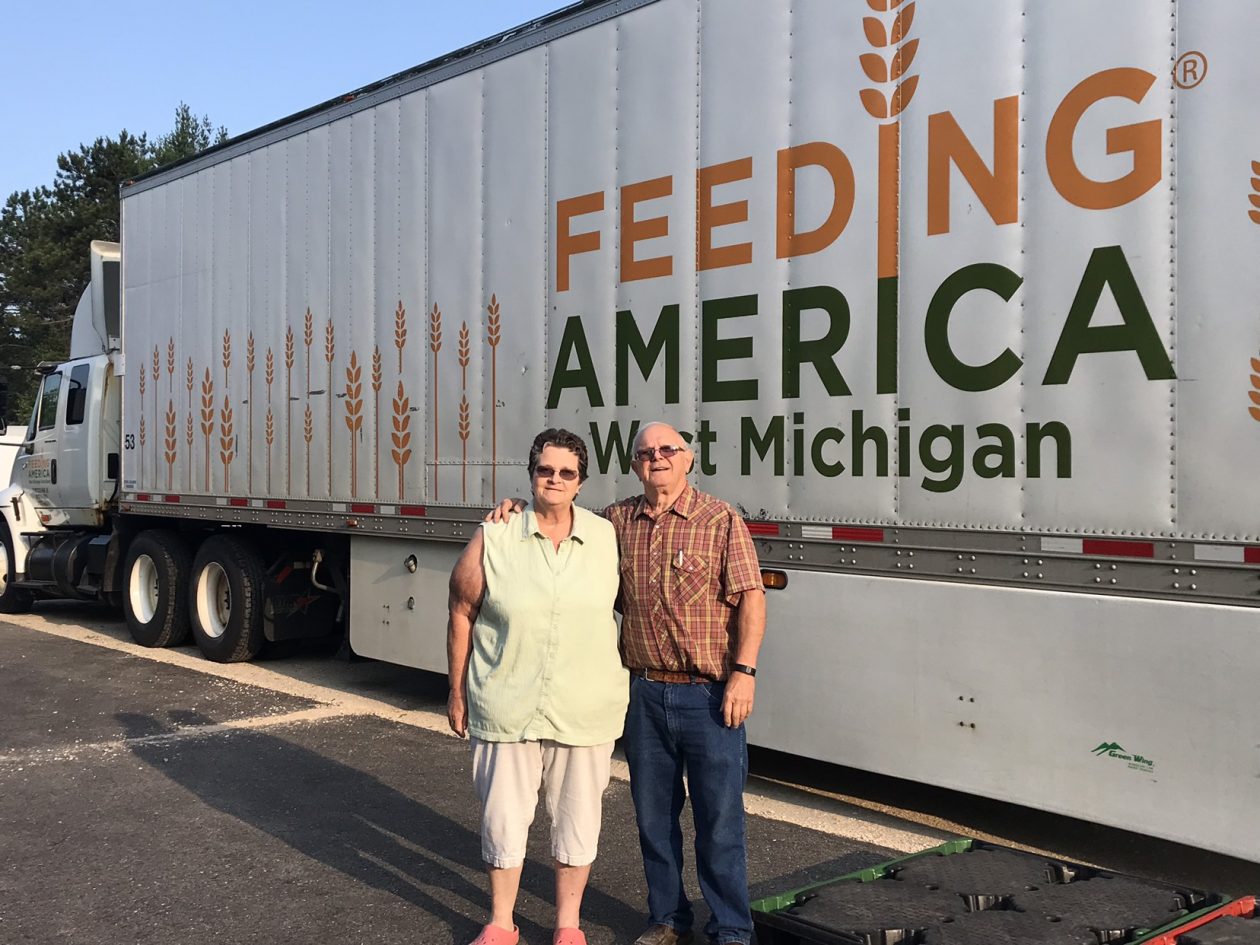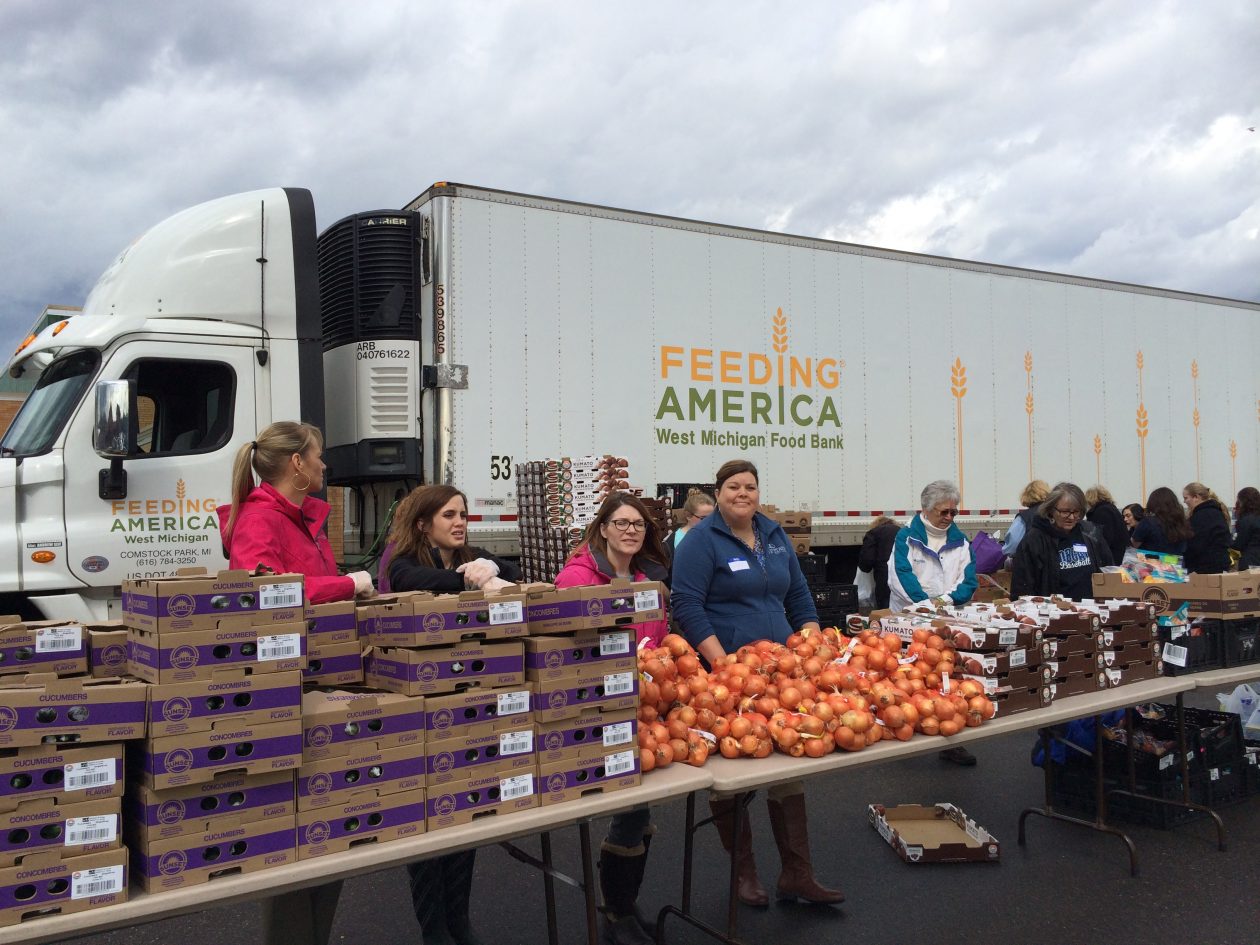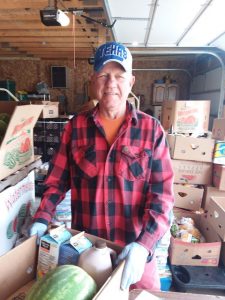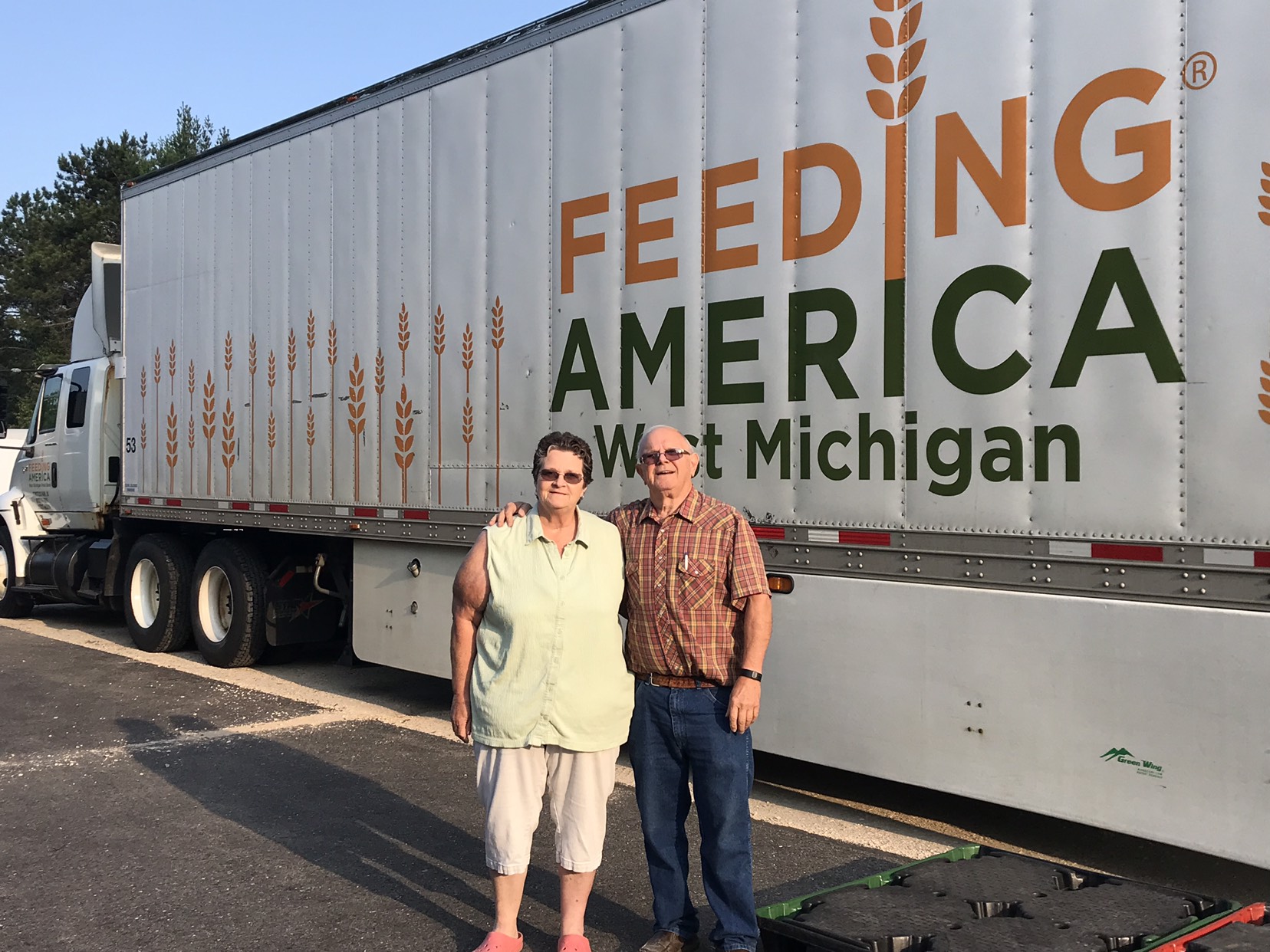Good Neighbor Services has worked hard to support Manistique residents struggling to make ends meet for the last 30 years. For nearly a decade, Margo and Loney have been instrumental to the nonprofit’s mission. Two years ago, they became the organization’s joint directors. The couple’s passion for Good Neighbor’s mission stems from their own experience: Early in their marriage, they faced hunger and didn’t know where to turn.

“We couldn’t make ends meet,” Margo said. There were many times when the couple could have benefited from the support Good Neighbor Services provides, but instead they had to make difficult choices — including allocating less money toward food.
Today, Margo and Loney serve people who find themselves in similar situations. Many of the neighbors the nonprofit supports are seniors, and their need is extensive. Schoolcraft County residents face food insecurity at one of the highest rates in our 40-county service area. 1 in 6 people are food insecure, and seniors face additional challenges.
Five years ago, the local paper mill went out of business, causing many to lose their jobs. Around that time, Margo and Loney heard about our Mobile Food Pantry program and began bringing the food distributions to town.
The need for food assistance is so great that some neighbors will do whatever it takes to receive food. Margo recalled an elderly woman who stood in line for hours to wait for a Mobile Pantry in the middle of winter — wearing a skirt and no stockings.
“We put her on the Feeding America [West Michigan] truck, we got her food and got transit to take her home,” Margo said.
To lessen this challenge, those who struggle to attend the monthly Mobile Pantry can pay a dollar or two for their box of food to be delivered to them through the local transit system.

Each of Good Neighbor’s Mobile Pantries provides 20,000 pounds of food — approximately 17,000 meals — to more than 450 families. Community members can also visit the organization’s fixed food pantry once a month to receive non-perishable staples. The pantry is open six days a week.
Each month, between 50 and 75 people come to the pantry, compared to the Mobile Pantries’ hundreds. According to Margo, the stigmatization of traditional pantries may be the cause of the disparity between the two resources: Seniors often feel as if they’re “applying for a system” by coming to a fixed food pantry, whereas lining up to a get a box to take home feels “more approachable.”
“That’s part of the reason this [Mobile Pantry] is so important,” Margo said.
This mindset among the elderly is exemplified by the number in need who don’t sign up for the Supplemental Food Assistance Program (SNAP). Fewer than half of eligible seniors are signed up. No one should feel ashamed to apply for food assistance, but Mobile Pantries provide a more accessible option for these seniors and for others who don’t qualify for SNAP but still face hunger. It’s also a useful resource for those who receive some help from SNAP but still need a boost to make ends meet.

Many community members come together to help out at each Mobile Pantry. Joe, a volunteer and veteran said:
“Spending time giving back to our community is something I have come to look forward to each month.”
We are grateful to have agency partners like Good Neighbor Services. Their efforts ensure that people facing tough times — like Margo and Loney once did — have somewhere to turn for the help they need.

